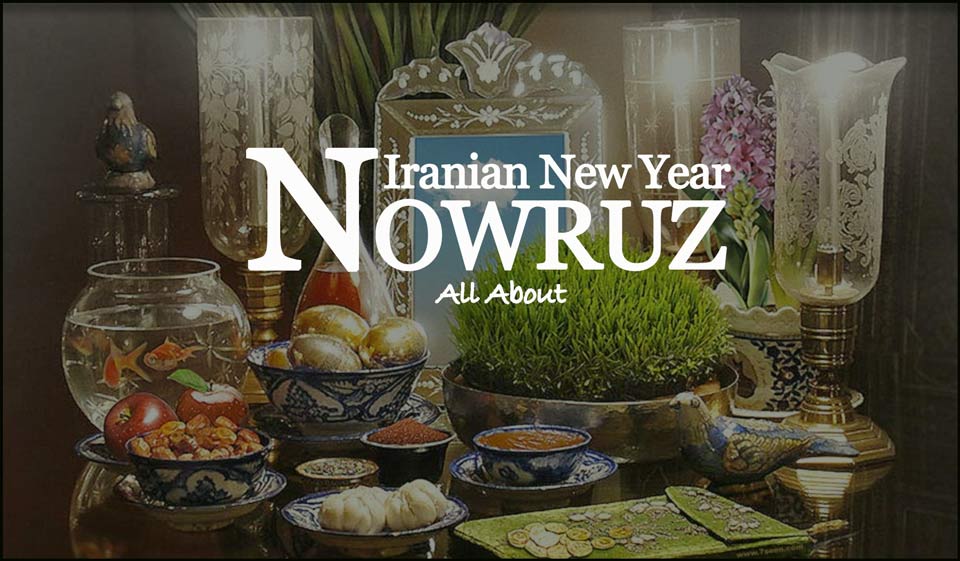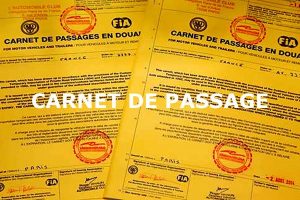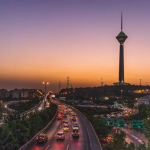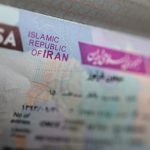
Nowruz, Nowrouz, Novruz, Nawrouz, Nouruz, Nawrouz, Nauryz, Nooruz. Whatever it is pronounced, the Persian New Year festival of Nowruz (the new day) is the most beautiful, largest and most colorful Iranian festival. This springtime celebration symbolizes the rebirth and the link between human and nature.
Described by the 11th-century Persian astronomer and poet Omar Khayyam as “the renewal of the world”, Nowruz dates back thousands of years at least to the Achaemenid era. Being one of the oldest festivals of mankind, now Nowruz is celebrated by millions of people.
Let us talk more about the origins and ceremonies of Nowruz.
Key Details about Nowruz:
- When: It is celebrated shortly after at vernal equinox, when day and night are equal in length.
- Traditions: Many celebrate with the Haft-Sin table, visiting friends and family, spring cleaning, and fresh clothes.
- Length: 13 days, concluding with Sizdah Bedar, when people spend the day outdoor
When Is Nowruz?
As the oldest and most important Iranian festival, Nowruz rituals and customs are the celebration of the triumph of spring over winter symbolizing light over darkness, life over death and love over hate.
Nowruz, begins with the astronomical beginning of spring with the commencement of the Vernal Equinox or Spring Equinox. It lasts for about two weeks, in which children have school holidays and everyday work is at a standstill. According to the Gregorian calendar, it is either on the 20th/21st March every year.
Iran New Year 2025
Nowruz (or Norooz) is the Iranian New Year, the first day of spring, and the first day of a new year in the Persian calendar. Nowruz is Thursday, March 20, in 2025.
Here, these times are displayed in the table below.
• Tehran, Iran: Thu, Mar 20, 2025 – 12:31 PM
• London, United Kingdom: Thu, Mar 20, 2025 – 9:05 AM
• New York, United States: Thu, Mar 20, 2025 – 5:05 AM
• Toronto, Canada: Thu, Mar 20, 2025 – 5:05 AM
• Dubai, United Arab Emirates: Thu, Mar 20, 2025 – 1:05 PM
• Istanbul, Turkey: Thu, Mar 20, 2025 – 12:05 PM
• Melbourne, Australia: Thu, Mar 20, 2025 – 8:05 PM
• Stockholm, Sweden: Thu, Mar 20, 2025 – 10:05 AM
• Brussels, Belgium: Thu, Mar 20, 2025 – 10:05 AM
• Beijing, China: Thu, Mar 20, 2025 – 5:05 PM
• Chicago, United States: Thu, Mar 20, 2025 – 4:05 AM
• Los Angeles, United States: Thu, Mar 20, 2025 – 2:05 AM
• Calgary, Canada: Thu, Mar 20, 2025 – 3:05 AM
• Tashkent, Uzbekistan: Thu, Mar 20, 2025 – 2:05 PM
• Dushanbe, Tajikistan: Thu, Mar 20, 2025 – 2:05 PM
• Nur-Sultan, Kazakhstan: Thu, Mar 20, 2025 – 2:05 PM
• Baku, Azerbaijan: Thu, Mar 20, 2025 – 1:05 PM
• Xinjiang, China: Thu, Mar 20, 2025 – 3:05 PM
• Bishkek, Kyrgyzstan: Thu, Mar 20, 2025 – 3:05 PM
• Ashgabat, Turkmenistan: Thu, Mar 20, 2025 – 2:05 PM
• Tirana, Albania: Thu, Mar 20, 2025 – 10:05 AM
• Tbilisi, Georgia: Thu, Mar 20, 2025 – 1:05 PM
• Baghdad, Iraq: Thu, Mar 20, 2025 – 12:05 PM
• Damascus, Syria: Thu, Mar 20, 2025 – 12:05 PM
History of Nowruz (Norooz)
Nowruz dates back to the Achaemenid Empire (550–330 B.C.), where ancient celebrations were held in Persepolis, the ceremonial capital of Persia. According to Persian mythology, the festival’s origins are tied to a legendary king who soared across the skies in a jeweled chariot, symbolizing renewal and the arrival of spring. Rooted in Zoroastrian traditions, Nowruz reflects themes of rebirth, light, and the triumph of life over darkness.
Nowruz in Myths and Legends
According to the legends of the ancient Iranians, Nowruz was created by great legendary figures such as Jamshid and Keyumars. These myths also again depict the cultural and symbolic values attached to Nowrouz and present it as the time of rebirth, prosperity, and unity. The legends of Jamshid and Keyumars also have an undercurrent of the Nowruz association with the Iranian kingship, prosperity, and cosmic balance.
Nowruz During the Achaemenid Era
Nowruz was celebrated extensively during the time of the Achaemenid Empire, but there are very limited texts referring to Navruz in the Achaemenid inscriptions. However, evidence indicates that Nooruz was a significant festival. Several instances can be cited, but perhaps a highly significant one was when Cyrus the Great declared it as the national holiday in 538 BC, thus setting up the cultural importance of Nowruz for Persians. Major celebrations were held by Darius I in Persepolis, and among the evidence for these is a 416 BC gold coin.
Some even argue that the construction of this building named Persepolis was owed to the hosting of Nooruz ceremonies to under the political culture of Nowruz to the Achaemenids.
Nowruz During the Parthian and Sassanid Dynasties
It has been decorated more during the Parthian and Sassanid dynasties. The Nooruz festival was highly developed. This period of the Sassanid, however, Nowruz was six days long in which the first two were common and the rest four grand and exclusive.
Prior to spring, 25 days before, grains were also planted as part of the agricultural calendar for estimating the harvest of the year. These practices included water splashing, fire lighting, gift giving, and the essences augmented by rulers such as Hormizd II. These customs associated Nowruz with nature and prosperity, referring to the Iranian people’s agriculturally based past and the cyclical nature of Iranian life.
Nowruz After the Arrival of Islam
Later, after the Islamic conquest of Persia, certain Arab conquerors and later rulers tried to eliminate Nowruz because of its opposition to the doctrines and celebrations of Islam. Nevertheless, Navruz remained a functional component of the cultural and identity system of Iranian society. At first, Nowruz was burdened with high taxes, but then it was additionally brought into higher esteem and was widely a part of different dynasties with lavish festivities, poetic tributes, and official events.
Additionally, Nowruz was not just entrenched during Seljuk times but also was part of calendar reforms that were incorporated into Persian administrative and now cultural calendar as well.
Nowruz During the Safavid Period
Roudaki said that Nowruz remained an important feast in the Safavid period, as well as a symbol of renewal and unity of the country. But its use was overshadowed by Shiite clergy, who wished to discard the useless customs in favour of practising religion. This, in effect, paved the way to the decline of fitz maturity of the Nowruz celebration in the broader socio-political landscape of Persia.
Nowruz During the Qajar Period
During the Qajar dynasty, Navruz retained its ceremonial importance with a distinct three-part “Nowruz Salam” celebration:
1. Public Reception: A gathering where representatives and officials would come together.
2. Marble Throne Greeting: A traditional greeting at the Marble Throne in the Golestan Palace, which symbolized the king’s direct interaction with his subjects.
3. Special Gate Greeting: A formal event that further highlighted social etiquette and royal customs.
Of the invitations, people was invited a day before the actual celebration with participants expected to arrive a full hour earlier, with an indication of how complex most cultures were when it came to the celebration rituals of the day.
Nowruz in Modern Times
Despite various challenges and suppression, Nowruz, which has more than 3100 years of history, is still a significant festival in Iranian society. Nauroz has been pushed underground and became clandestine in some parts of the world, especially when institutions like the Soviet Union and the Taliban outlawed the celebrations.
Nowruz was banned temporarily for about two decades after the revolution in 1979 Iran led by Islamic clerics but was later restored as a national celebration again. The world had learned about Nauroz when UNESCO put it on the list of events in 2009 and when the UN endorsed March 21 as International Nowruz day in 2010.
Today, Nowruz continues to be a major celebration in Iran and among many ethnic groups, highlighting its role as a symbol of hope, renewal, cultural resilience, and community solidarity. It serves as a bridge connecting past traditions with present identity, showcasing the enduring influence of Nowruz across centuries and cultures around the world.
Origins of Nowruz
- Zoroastrian Roots:
Nowruz is intimately tied to Zoroastrianism, the ancient faith of Persia. Zoroastrians believed spring heralded the triumph of good (the god of light, Ahura Mazda) over evil (the god of darkness, Angra Mainyu). The festival represented the rebirth of life, nature, and the victory of good over evil.
- Astronomical Significance:
Nowruz occurs at the vernal equinox (about March 20 or 21), when day and night are of equal length. This astronomical event of great significance for ancient Persians marked the beginning of a new agricultural and spiritual year.
- Nowruz in Pre-Islamic Persia
The festival probably originated in the Achaemenid Empire (550–330 BCE), when Persian kings codified its observance.
By the time of the Sassanian Empire (224–651 CE), Nowruz had become the most significant celebration in Persian culture, celebrated with lavish royal ceremonies and public festivities.
- Nowruz Under the Islamic Conquest
When Islam reached Persia in the seventh century, Nowruz continued as an important cultural festival, despite some initial resistance from Islamic rulers. Eventually, it was also adopted as a secular and cultural event, at the expense of its original religious context.
Persian dynasties — such as the Safavids and their successors — cherished and cultivated Nowruz traditions, reinforcing its place in the Persian identity.
-
Nowruz Today
Nowruz is celebrated throughout the Persian cultural sphere, including in Iran, Afghanistan, Tajikistan, Kurdistan, and parts of Central Asia, South Asia, and the Caucasus.
UNESCO has also recognized it as a UNESCO hugely promotes its international cultural heritage event, emphasizing its positive role in the United Nations of unity and peace.
Which Countries Celebrate Nowruz?
Although having Iranian and religious Zoroastrian origins by coming from the Great Persia, Nowruz actually knows no borders. A total of 300 million people worldwide from diverse ethno-linguistic communities take part in the celebrations. The main celebration is in Iran, Central Asia and the Near and Middle East. But the festival also takes place in the Western Balkans, in the Caucasus and in the regions on the Black Sea.
It is an official holiday in the following countries: Iran, Afghanistan, Albania, Azerbaijan, India, Kazakhstan, Kyrgyzstan, Macedonia, Tajikistan, Turkey and Turkmenistan. Families, friends and acquaintances meet to congratulate themselves and dine together.
How different countries celebrate Nowruz, the Persian New Year
Nowruz, the Persian New Year, is celebrated across various regions and countries, each with unique customs and traditions. While the core essence of Nevruz remains the same—welcoming the arrival of spring and the renewal of nature—customs may differ from one country to another. Here’s a brief look at how Nowruz is celebrated in different countries around the world.
Iran
Nowruz is celebrated in Iran, and every family sets a Nowruz Haft Sin table that has Seven S’s items on it. The table of Nowruz Haft Sin consists of seven dishes or items, each of which begins with an ‘S’ symbolizing such aspects as health, wealth, happiness, and so on. There’s an important part of celebrations where people put gifts and symbols, such as garlic, vinegar, apples, and coins. Families gather together to celebrate with food, music, and meaningful traditions.
Azerbaijan
The traditions that are followed in preparation for Nowruz in Azerbaijan are nearly similar to that of Iran. This is an indication that most of these countries are culturally related in one way or another. The table of Nowruz Haft Sin and related actions are still important for the celebrations, which underline the similarities.
Afghanistan
Nowruz in Afghanistan is also observed by setting the special table of seven fruits; which symbolize good luck and happiness. This does not, however, deviate significantly from Iran’s Nowruz Haft Sin, although it retains the seven traditional settings up of a table for Nowruz.
Nowruz in the Kurdish Regions
Nowruz among the Kurds is observed between march 18 and 21 and is referred to as a symbol of Kaveh, the blacksmith civil triumph over the oppressor Zahhak. Kurds usually celebrate persian New Year outside cities, and it is sometimes attached to either the beginning of the agricultural or spring season. Girls and women dress in bright and occasionally shiny shawls and scarves, boys and young men wave green, yellow and red flags, jump over fires, dance, and sing to preserve the Nowruz traditions.
Celebrating Nowruz in Central Asian Countries
The New Year is extremely important in the countries of such region as Central Asia, including Uzbekistan, Tajikistan, Kazakhstan, Kyrgyzstan, and Turkmenistan. In these nations, Nowruz is observed as a new beginning, as a time of reunion with family and friends, and as a time of communal feasting. These involve cultural foods, numerous feasts, cultural dances as well as ceremonial activities.
Arab Communities in Southern Iraq
For Arabs in southern Iraq, Nowruz is celebrated by visiting lush fields and green areas. A notable tradition includes a visit to the Ivān i Madāyen, an ancient arched palace. These visits emphasize the connection to nature and cultural pride among the Arab communities.
Nowruz Is Celebrated by Which Religion
Nowruz, celebrated on the astronomical vernal equinox (around March 21), has its roots in Zoroastrianism, the ancient Persian religion that predates both Christianity and Islam. While originating from Zoroastrian traditions, Nowruz is now observed as a cultural festival by people of various faiths, including Muslims, Baháʼís, and others, across the Middle East, Central Asia, and beyond. Its themes of renewal and rebirth resonate universally, transcending specific religious practices.
More information about Religions and Groups That Celebrate Nowruz
- Zoroastrians:
Nowruz is closely tied to Zoroastrianism, the ancient Persian faith. It was the victory of good over evil, as well as the renewal of nature, under Zoroastrian cosmology and ethics.
Still today, Zoroastrians around the globe (especially in Iran and India, where they’re known as Parsis) observe Nowruz as a national holiday.
- Muslims:
Although it is not an Islamic holiday, many of the Muslims in areas that are culturally influenced by Persians celebrate it as a cultural festival (this includes the Persians of Iran, as well as regions such as Afghanistan, Central Asia, and parts of the Middle East).
For those who are Shia Muslims, particularly in Iran, it became part of their tradition, so they introduced religious prayers and Qur’anic recitations around Nowruz celebrations.
And in countries such as Afghanistan and Tajikistan, Sunni Muslims also recognize it as a cultural, not religious, holiday.
- Baha’is:
Nowruz is an important religious event for Bahá’í Faith adherents. It also signifies the conclusion of the Nineteen-Day Fast, as well as the beginning of the Bahá’í New Year. It fits perfectly into their cycle of spirituality, it is observed with invocations, congregations, and jubilations.
- Kurdish Communities:
As a cultural festival and a symbol of freedom and resistance, Kurds in Iraq, Turkey, Syria, and Iran celebrate Nowruz connecting it to their heritage and identity.
- Other Groups:
Dozens of other communities in the Middle East and Central Asia also mark Nowruz, including Yazidis and Alawites, often mixing unique religious or cultural practices into the celebrations.
What is Nowruz in Islam
Nowruz is a cultural, not Islamic religious holiday, one with ancient Persian roots that predate Islam by centuries. It originated in Zoroastrianism, the pre-Islamic religion of Persia, where it marked the vernal equinox and represented renewal and the victory of good over evil.
Even after the arrival of Islam in Persia, Nowruz continued to be celebrated widely as a cultural holiday rather than a religious one. Gradually, it assimilated into the practices of Muslim-majority areas, including the likes of Iran, Afghanistan, and parts of Central and South Asia.
Nowruz in an Islamic Context
Cultural, Not Religious:
Nowruz is celebrated by Muslims from different sects, especially in Iran and other nearby areas, but its customs and rituals have no teaching in Islam. Instead, they are based on ancient Persian traditions.
Acceptance in Islam:
Islamic scholars have had varying opinions:
- Others, mainly in early Islamic history, considered it allowed because it led to gratitude, unity, and renewal.
- Some others have been wary and have talked about the necessity to distinguish between cultural practices and Islamic rituals.
Modern Practice:
Nowruz is celebrated by Muslims and non-Muslims in Iran and other places. Islamic features are also often included in the family occasions that take place at Nowruz, be it reciting the Qur’an, their du’as (prayers), and so on.
Persian New Year celebration
Nowruz, or Persian New Year, celebrates the first day of spring and the start of the year in the Iranian calendar. Observed on or about March 20th, it represents renewal, growth, and the victory of light over dark. Spanning two weeks, the festival can be celebrated in several ways, such as cleaning one’s home (Khaneh Tekani), providing the Haft-Seen table (seven items that start with ‘S’ in Persian) , and visiting family and friends. Nowruz is an official public holiday in over 100 countries and is a time when families come together to celebrate and reflect on personal renewal.
What are the Persian New Year Traditions?
Persian New Year, or Nowruz, is a celebration filled with meaningful traditions and rituals:
- Family Gatherings: Families come together to celebrate and enjoy a festive atmosphere.
- Traditional Meal: The special dinner includes white fish, rice, and herbs.
- Eidi: Children receive money gifts (Eidi) to mark the start of the new year.
- Haft-Seen Table: A table set with seven symbolic items starting with the letter ‘S’, each representing hopes for the coming year.
- Spring Cleaning (Khaneh Tekani): Homes are thoroughly cleaned to welcome a fresh start.
- Visiting Homes: People visit each other’s homes, bringing traditional gifts to share in the celebration.
How Do Persian Celebrate Nowruz And What Are The Traditions?
Nowruz as an important event is a complex of numerous rituals and ceremonies each one plays an important role in the symbolism.
Iranians love to buy new clothes and clean homes before Nowruz. During the Nowruz period, homage is also paid to the elderly who give sweets and coins to the little ones in order to bring luck.
To take part Nowruz ceremonies or have a dinner with an Iranian family take part in one of our Iran tours.
-
Khaneh Tekani (Spring Cleaning)
As we move into the month of March, spring is more felt. The dark and cold days of winter are passing while brighter days of spring are promising. To respect this renewal, Iranians prepare to welcome spring and doing the extensive cleaning in the name of Khan-e Tekani. The carpets and curtains will be washed, the cupboards will get rid of unused materials to make space, the walls will be painted if they need. This process has both physical and spiritual benefits.
-
Chahar-Shanbeh Suri (Wednesday Fire)
One of the most important and popular rituals of the Persian New Year is the so-called Chahar-Shanbeh Suri or the Wednesday Fire Festival of Nowruz.
On the eve of the last Wednesday before spring, many of the 300 million people jump over fire, chanting “Zardi ye man az to, sorkhi ye to az man!” Translated literally: “My weakness to you, your strength to me!”
-
Amu Nowruz: Persian Santa Claus
Of course, the children should not miss out on the festive season. Similar to Santa Claus, especially in Iran “Amu Nowruz” (Uncle Nowruz) delights the little ones with gifts. The bearded man walks through the streets with his musician and dancing companion “Haji Firuz“. According to tradition, he approaches his beloved sleeping wife “Naneh Sarma” (Cold Mum) once a year and leave her again.
-
The Last Day Of Nowruz Sizdah-Bedar: Escape From The Evil Spirits
Number 13 is an unlucky number in the Persian-speaking cultural area. After 12 days of celebrating Nowruz that it really deserves, on the day 13th, most families leave their homes to spend the day outdoors. After all, that day, traditionally, evil spirits haunted people in their homes. In addition to picnic material, the celebrants also have the “Sabzeh” from the Haft Seen table to give it back to the nature through the flowing water.
While wishing for whatever you want, knots are tied into the green. That should bring good luck. After the “Sizdah Bedar”, the celebrations end.
What Is In The Nowruz Table?
Haft Sin literally translated the “seven S” is the name of Nowruz table. A compulsory part of Nowruz is the “Sofreh” (tablecloth), which is decorated with seven symbolic elements. As the name suggests, the respective objects all begin with the Persian letter S. They are sometimes interpreted differently:
- “Sib” (apple): symbol for rebirth and health
- “Sabzeh” (green, often barley, wheat or lentil sprouts): symbol of liveliness
- “Serkeh” (vinegar): symbol of immortality
- “Senjed” (Persian olive): symbol of love and affection
- “Somaq” (Sumac): symbol for the taste of life
- “Sir” (garlic): symbol of protection
- “Samanu/Samanak” (sweet pudding made from wheat malt): symbol of blessing and relief
Additionally, optional elements are also added to make the table more beautiful:
Mirror (Ayineh), coins (Sekeh), candles (Sham’), colored eggs (Tokhm-e morgh-e rangi), a goldfish in a glass (Mahi ghermez) and a holy script (Ketab) which can be the divan by the well-known Persian poet Hafez, the Qoran, the Bible, the Avesta or the Torah.
What Do You Eat In Nowruz?
From the first day of Nowruz celebrations, people visit each other’s house and significantly, homage is paid to the elderly. People gather together, eat the specific foods and sweets associated with Nowruz mainly pastries, sweets, sherbets, nuts and fruits.
There are two main things that accompany the entire festival: family visits and sweets. The sweets and dishes may differ based on the customs of the regions but generally some of the sweets are Sohan, Noghl and Gaz, Baghlava, Nan berenji (rice cookies), chickpea cookies, almond cookies, walnut cookies.
Some of the more popular Nowruz dishes include: Sabzi Polo Mahi (Rice tinted vivid green with herbs and served with fried fish), Kookoo Sabzi (Persian herbed omelet), Ash-e Reshteh
How Do You Greet And Wish Nowruz In Persian?
Let us teach you how to correctly greet your friends over New Year, and wish them well with the Persian New Year wishes.
- Nowruz Pirooz- means ‘victorious Nowruz’.
- Eid-e shomā mobārak- means ‘holiday be joyous’.
- Nowruz mobārak- means ‘happy New Year’.
- Sāl-e nō mobārak- the literal translation of ‘happy new year’.
- Sad sāl bé in sālhā- means ‘there be 100 more blissful years’.
Nowruz UNESCO World Heritage
Since 2009, Nowruz has been part of the Oral and intangible cultural heritage of UNESCO. The focal point of the festival is the “affirmation of life in harmony with nature, the awareness of the inseparable link between constructive labor and natural cycles of renewal and the solicitous and respectful attitude towards natural sources of life”, as stated in the justification for inclusion in the list of the United Nations Educational, Scientific and Cultural Organization (UNESCO).
“The festival of Nowruz unites the individuals and peoples of the 12 countries that together nominated the festival for inscription on the Representative List of the Intangible Cultural Heritage of Humanity to celebrate values of sharing and harmony.”
Audrey Azoulay, Director-General of UNESCO, on the occasion of the International Day of Nowruz
To visit the UNESCO world heritage sites in Iran, check Iran UNESCO World Heritage Tour.
Nowruz And Persepolis
Although the word Nowruz is not recorded in Achaemenid inscriptions, there is a detailed account by Xenophon of a Nowruz celebration taking place in Persepolis and the continuity of this festival in the Achaemenid tradition. Herzfeld also believed that Persepolis was made for special ceremonies, most importantly Nowruz when the satraps (the representatives of the provinces of the empire) came to deliver their tributes to the king of kings.
In Tachar palace you can see one particular bas-relief, a lion biting a bull, the passage from winter to spring or the symbol of Nowruz.
Regardless of those who have ruled over Iran, there is something in Persepolis that has remained to this date, the Persian New Year. Iranians continue to go to Persepolis to celebrate Nowruz as in the times of the Achaemenid kings.
Nowadays, the world has transformed into a global village with people just one click away. Check the Instagram, Facebook and Twitter pages of Irun2Iran where we update all you need to know about traveling to Iran.
Conclusion
Nowruz is more than a new year; instead, it is an eternal moment of celebration, renewed life, hope, spring, and the beauty of nature. Its roots lie in ancient Persian traditions but it spans across religious and cultural lines and brings millions around the world together in shared values of gratitude, togetherness, and hope. From the symbolic Haft-Sin table to exuberant social and outdoor events, Nowruz represents the universal human need for new beginnings and a harmonious relationship with nature.
FAQs about Nowruz
How does Iran celebrate New Year’s?
Iranians celebrate Nowruz with the Haft-Sin table, family gatherings, gift exchanges, and traditions like Chaharshanbe Suri.
Which countries celebrate Nowruz?
Countries celebrating Nowruz include Iran, Afghanistan, Azerbaijan, Iraq (Kurdish regions), Central Asia (e.g., Uzbekistan, Kazakhstan), and parts of the Balkans, South Asia, and the Middle East.
How long is the Nowruz holiday in Iran?
Nowruz in Iran is a 13-day holiday, with the last day marked by Sizdah Bedar, a picnic day outdoors.
What is the Nowruz festival in Iran?
Nowruz is the Persian New Year, symbolizing renewal and the arrival of spring, celebrated with rituals like the Haft-Sin table, visiting loved ones, and cultural festivities.
Can Muslims celebrate Nowruz?
Yes, many Muslims celebrate Nowruz, particularly in Iran and Central Asia, as a cultural festival rather than a religious event.
Who celebrates Nowruz?
Novruz Holiday is celebrated by Persians, Kurds, Azerbaijanis, Central Asians, and other communities in the Middle East, Balkans, and South Asia.
Is Newroz Kurdish or Persian?
According to Nowruz festival history, its origins are Persian, while Kurds have adapted it with unique cultural significance.

















